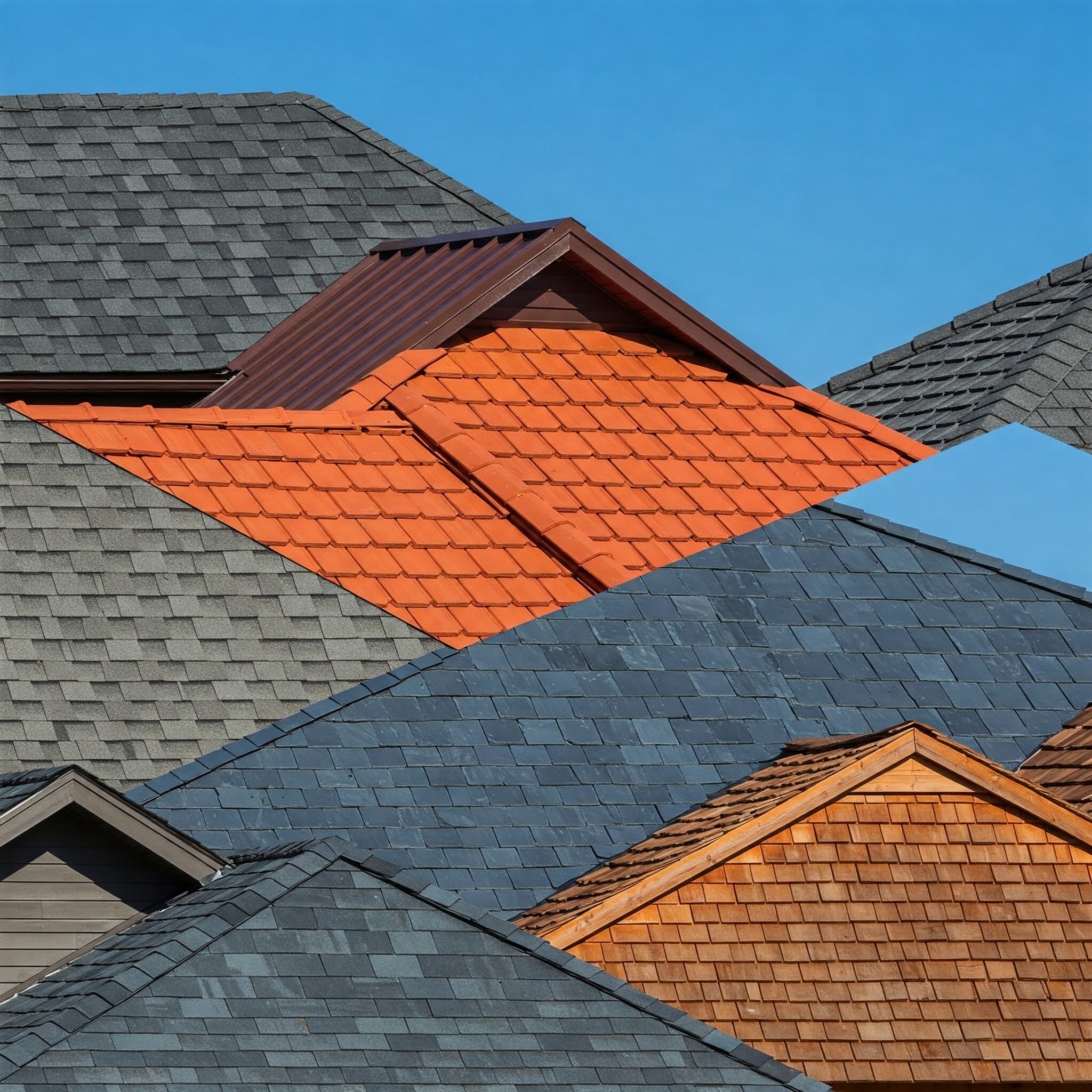IN THIS LESSON
MATERIALS, MATERIALS, MATERIALS
Roofs come in a variety of styles and materials, each designed to meet different needs based on climate, budget, aesthetics, and structural requirements. In regions with heavy snowfall, steep-pitched roofs like gable or A-frame designs help prevent snow buildup, reducing the risk of structural damage. In hot climates, flat or low-slope roofs are common, often featuring materials like reflective coatings or clay tiles to combat heat. Coastal areas may favor metal or shingle roofs that withstand high winds and salt exposure, while traditional slate or wood shake roofs add timeless beauty to historic or luxury homes. One of the most common and versatile options is asphalt shingle roofing, which is widely used across the U.S. due to its affordability, durability, and ease of installation. Asphalt roofs perform well in moderate climates and come in a variety of styles, making them a practical choice for both residential and commercial buildings. Beyond functionality, roof types also impact energy efficiency, maintenance needs, and long-term durability, making it essential to choose the right design for your specific environment and goals
Asphalt Shingles: Most common, cost-effective, and easy to install
Metal Roofing: Durable, energy-efficient, and ideal for extreme weather
Tile Roofing (Clay & Concrete): Long-lasting, aesthetic, and great for hot climates
Slate Roofing: Premium material with a high-end appearance and long lifespan
Wood Shake & Shingle Roofing: Traditional, natural look, but requires maintenance
Flat & Low-Slope Roofs: Common for modern designs and certain climates

